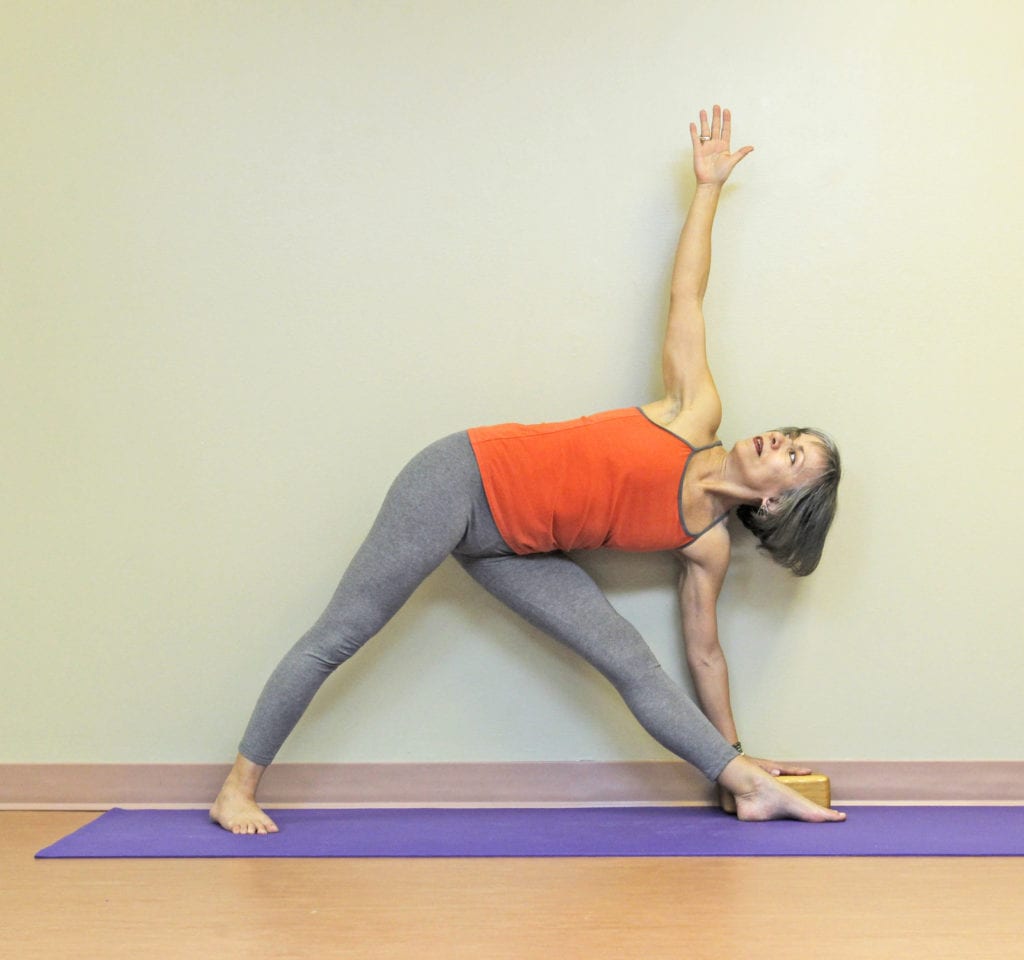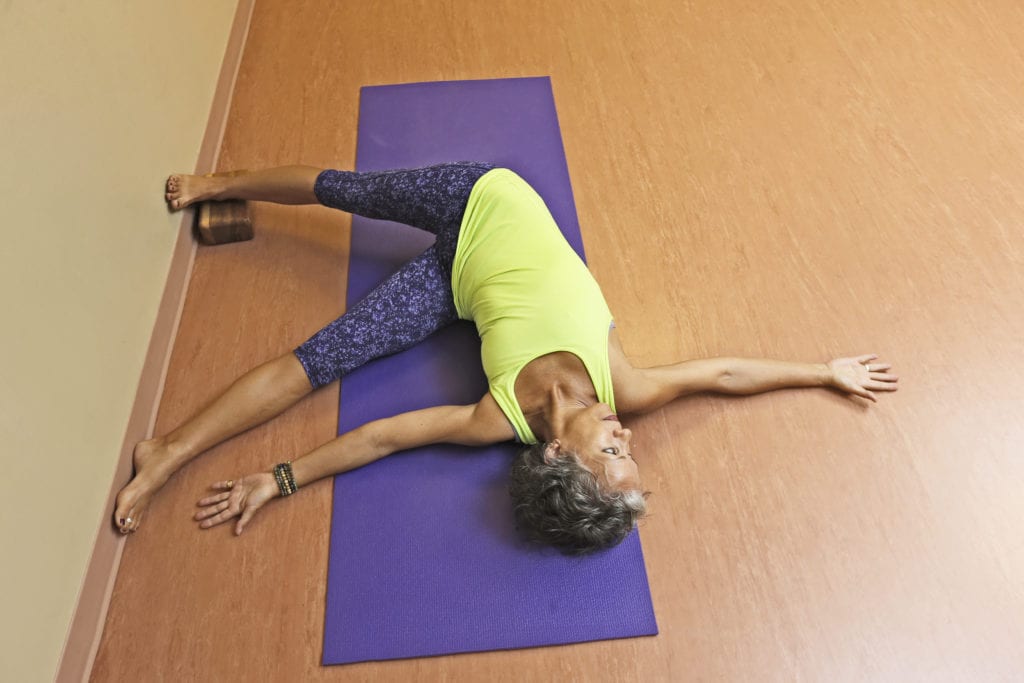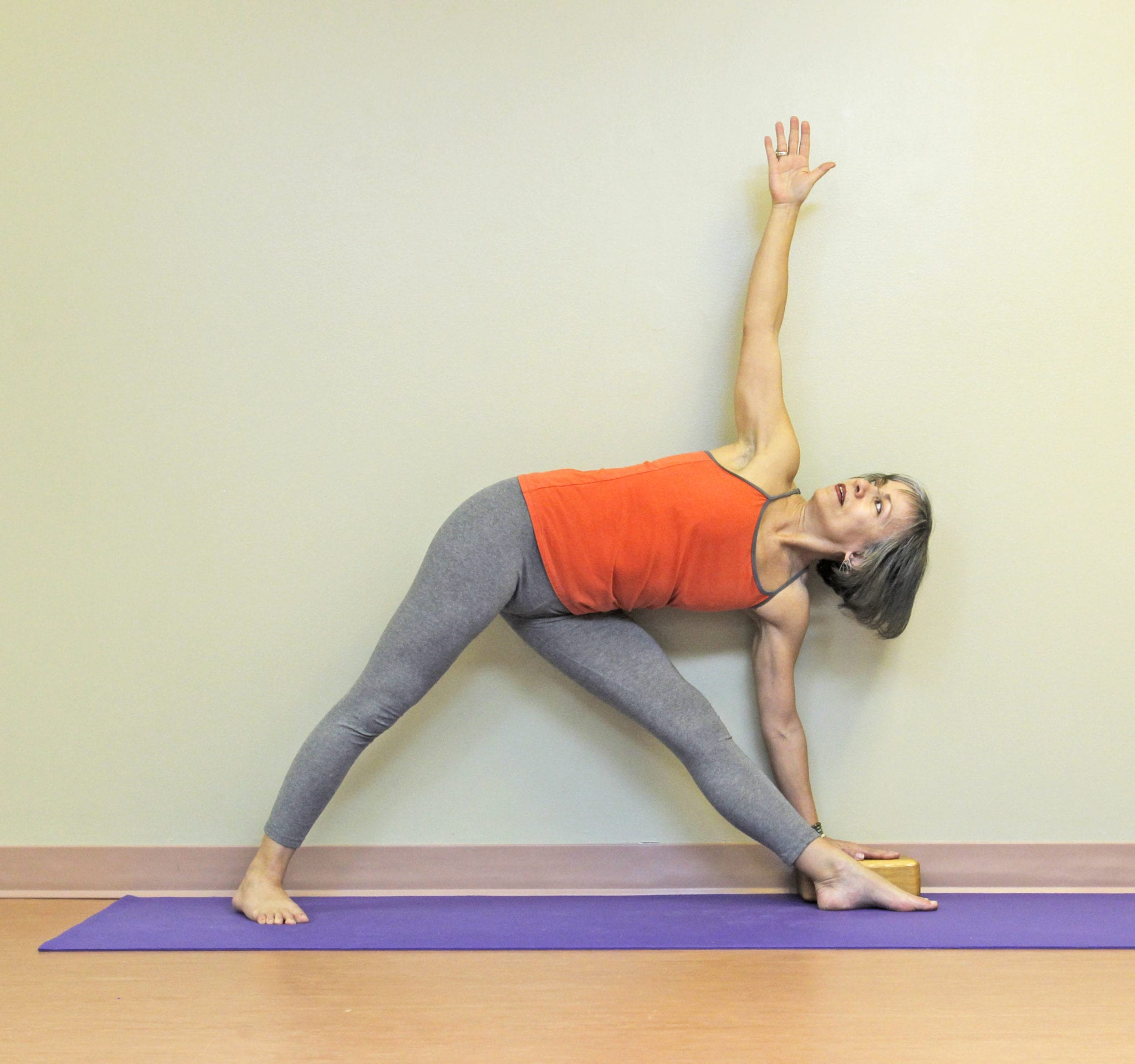Establishing a healing yoga practice at home is challenging even for advanced yogis. In order to continually return to your yoga mat without the guidance of a teacher, you need to feel committed to your reasons for practising (strength, length and ease) and establish a disciplined schedule (three to five days per week).
To increase your chances of meeting these goals, it is best to keep your practice simple. In its early days, focus on standing poses, which ground you to the earth and centre your awareness in the present. Standing poses move your joints through a full range of motion while simultaneously balancing and integrating flexibility, strength, endurance and coordination. While establishing a firm foundation, these poses also reveal where your individual weak points lie.
Arguably, the most-recognized standing pose is Utthita Trikonasana (extended triangle), which shapes the body into triangles as it rotates the pelvis over the legs. In Trikonasana’s full expression, the hip joints and hamstrings are loosened and released, which are typically tight areas in most bodies. The strength building realized in the legs provides support to the spine, particularly because of the firmness of the back leg. And as yoga teaches, whenever the spine feels supported, it rewards us with added length.
The beauty of Trikonasana lies in the fact it is a standing pose, forward fold, back bend and twist; all in one posture. The standing forward fold works the hips and hamstrings. The backbend is achieved through a slight arch brought about when turning the breastbone toward the ceiling. Both the back arch and twisted rib cage contribute to opening the heart. Trikonasana also teaches external rotation of the thigh bone in preparation for expressing more advanced postures. Other benefits of Trikonasana include increased flexibility in the muscles of the back; stronger, longer neck muscles; increased circulation in the pelvic bowl; improved functioning in the reproductive and digestive organs; and reduced anxiety and nervous tension.
Even with these healing benefits, Trikonasana is contraindicated when the following conditions are present — diarrhoea, headache and low blood pressure. Modify the pose if you have a heart condition by practising against a wall and keeping the top arm on the upper hip. Similarly, if you have high blood pressure or neck issues, gaze down to the floor while keeping both sides of your neck evenly long. For 18 more reasons to experience the tremendous benefits of Trikonasana and the multi-posed practice of yoga, click here.
As you practise the following yoga action in the poses illustrated below, work to gently correct these common pitfalls — lost or loose connection to the back heel, overly rounded back or rib cage and over-extended upper arm.
Action: Line up the crown of your head with your tailbone. For more advanced practitioners, also roll your breastbone up toward the ceiling.

UTTHITA HASTA PADANGUSTHASANA II WITH SIDE BEND (Hand to Big Toe pose II with side bend)
Begin in Tadasana (Mountain Pose) with your right side facing the chair. Place your right heel onto your support (chair seat or chair back), and externally rotate your thigh bone until your toes and knee point upward. Bring your arms into a “T” position. Find the action and side bend over your right leg. Hold for 5 to 10 breaths while you find the action once again. Repeat on the other side.

UTTHITA TRIKONASANA AGAINST WALL (Triangle pose at wall)
Start in Tadasana with your heels 4 to 6 inches away from the wall. Place a block (low, medium or high height) for your hand. Step approximately 3 ½ feet apart. Turn your right toes in slightly and rotate your left leg out so your foot and knee are parallel to the wall. In the upright position, bring your arms into a “T”. Find the action and keep it as you side bend over your left leg. Hold for 5 to 10 breaths while you find the action again. Your left outer hip, shoulder and head are in contact with the wall. Repeat on the other side.

SUPTA UTTHITA TRIKONASANA (Lying-down Triangle pose)
From a sitting position, lean sideways onto your left elbow. Step your left leg forward of your elbow, and your right leg back slightly with your right foot resting onto a block. Lower your torso onto the floor keeping it as parallel to the wall as possible; left hand reaching toward left foot. Roll your right shoulder toward the floor but don’t force it. Find the action. Hold for 5 to 10 breaths. To come out, roll toward the wall onto your left side as you bend your knees. Press up to sitting and repeat on the other side.

UTTHITA TRIKONASANA (Triangle pose)
From Tadasana, step your feet approximately 3 ½ feet apart. Turn your right toes in slightly and rotate your left leg out so your foot and knee point forward. Bring your arms into a “T”. Find the action and keep it as you side bend over your left leg. Place your left hand onto a block unless your full palm easily reaches the floor. Hold for 5 to 10 breaths while you find the action again. Repeat on the other side.
Winnipeggers Helen Maupin (www.righttojoy.com) and Candace Propp (www.natureofcontentment.com) are 500-hour certified yoga teachers and authors of the Creating Space: Yoga Actions book series. To purchase these print or ebooks, visit their websites. For yoga teacher training with them and Stacy Schroder register at www.sereneyogastudio.com.





